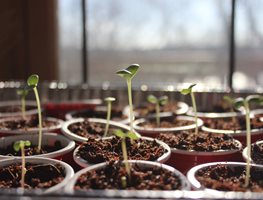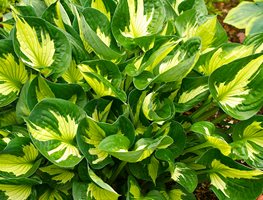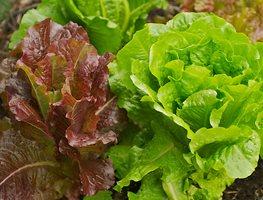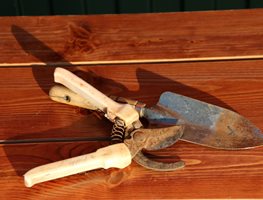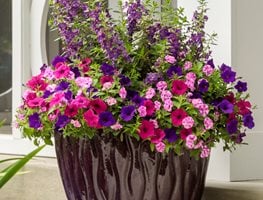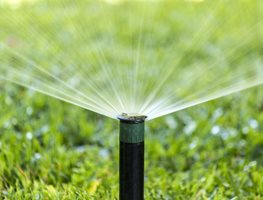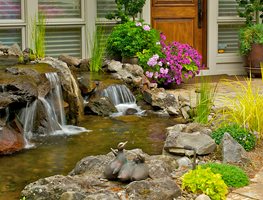10 Spring Gardening Tips and Chores
Get advice for waking up the garden for the new growing seasonSee our latest spring ideas: Spring Garden Ideas
After a long, cold winter, gardeners are anxious to be outside and get their hands in the dirt. As memories of harsh winter storms fade in the warmer days of spring, it’s time to think about waking up the garden for the new growing season. With so much to get done, it’s easy to feel overwhelmed on where to begin. By planning ahead and getting yourself organized, spring chores can be a snap. Here are some tips to get you started.
For more spring inspiration, see Spring Garden Ideas and Activities
Start seeds
Start seeds of vegetables and annuals indoors 6-8 weeks before you plan to set them out. Make a planting schedule so that seedlings are mature at the optimal time for your region. Once soil temperature reaches 40 degrees F, crops such as greens, radishes and peas can be directly sown. Wait until soil temperature warms to 50 degrees F to plant cabbage, onions and Swiss chard. Summer vegetables can be sown in late spring. To get the most out of seed starting, see: How to Grow Your Own Plants From Seed
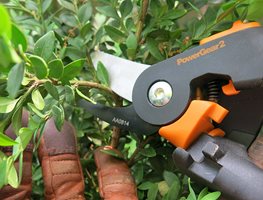
Photo courtesy of Fiskars.
Prune shrubs and vines
Now is the time to prune roses, (some) shrubs and perennial vines. Remove dead branches and shape plants once new growth appears. Research proper pruning techniques and timing for each variety, and hold off on pruning spring bloomers until after they flower. Get more advice on pruning roses and hydrangeas..
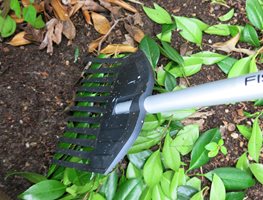
Photo courtesy of Fiskars.
Prepare ornamental beds
- Start with areas where spring blooming bulbs are peeking up to spiff up early color displays.
- Rake out debris and cut back perennials and ornamental grasses before new growth appears.
- Clear out weeds using these organic methods.
- Top dress with several inches of homemade compost or well-seasoned manure, which will add slow-release nutrients, suppress weeds, and conserve water during warm summer months. Learn more about mulching.
- Fertilize trees, shrubs, and perennials according to individual needs.
Divide perennials
Once new growth appears, it’s a good time to divide perennials. Transfer extra clumps into bare spots or give them away to friends. If you belong to a neighborhood gardening group or club, organize a plant swap. It’s a great way to try out new plants for free. Learn more about designing with perennials.
Get ready for spring veggies
Remove surface debris such as leaves or mulch from vegetable beds to help warm the soil. To avoid compaction, wait until soil has dried out sufficiently before tilling. If soil crumbles when you try to make a ball, then it's time to work the beds. Add amendments such as aged compost, manure, and trace minerals before planting early crops of lettuce, radishes, kale, peas, and onions. Protect young plants from late frosts with a row cover or cold frame. Read more about vegetable gardening and discover 16 spring vegetables perfect for early-season growing.
Clean and freshen outdoor furniture
Power wash decks and patios, then wipe down stored patio furniture and set it outside for the season. Check for any tears or damage caused over the winter and make repairs.
Maintain and organize tools
- If you didn’t do so last fall, scrape excess dirt off tools, wash in soapy water and allow to dry thoroughly. Coat metal parts with boiled linseed oil to prevent rust.
- Sharpen pruners and loppers.
- Make sure your lawnmower and other power tools are in good working condition and add oil or gas as needed.
- Clean out your garden shed or garage, organize tools and garden supplies, and discard any items no longer of use.
- Learn more about garden tool care and maintenance.
Prepare containers for spring planting
Scrub out empty containers and fill with fresh potting soil in preparation for planting. Read more about container planting.
Maintain irrigation
Check, adjust, and replace any damaged irrigation lines. Re-install hoses that were put away for winter and make sure they've not developed any holes or leaks.
Rejuvenate water features
Remove dirt and debris from water features and clean or replace filters. Turn on pumps and make sure water is circulating properly. For natural water gardens such as ponds or bogs, add beneficial plants or apply other algae control methods to maintain a healthy ecosystem.
RELATED:
Summer Garden Tips
Fall Gardening Tips
Winter Gardening Tips

